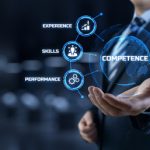With the advancements in HCM technology, HR departments can now automate tedious manual tasks, efficiently manage every aspect of human resource management, and—above all—lower the likelihood of sensitive human errors.
However, selecting the best solution is not the only essential step in maximizing the advantages of a human capital management system. It requires a carefully considered implementation plan that resonates with your company’s particular human capital management requirements.
This guide will walk you through every step required to ensure your company gets the most out of an HCM implementation by boosting employee engagement.
Map Out Goals And Objectives
A perfect HCM implementation starts with a thorough understanding of its objectives and goals pertaining to human resource management. This includes having a clear picture of what the system should be capable of performing in the future.
The best way to assess this is to hold open and transparent discussions with important stakeholders and HR members, who can ensure the HCM implementation strategy aligns with the organization’s goals focused on its workforce management.
Ensure Accurate Data Transfer
The HR data is the foundation of an HCM system. Make sure this data is transferred correctly to the new system with precision and accuracy.
Generally, this is a stage where many organizations go wrong with their HCM implementation and face the most unforeseen errors. Remember that if the data is not clean and accurate, the new system may have issues right from the start, making it difficult to adapt to the new system.
Testing
Before introducing the system to the employees, make sure your system undergoes extensive testing prior to the scheduled go-live date. This stage will help identify errors in employee personal data, payroll tax inaccuracies, and salary misinformation.
Once the test is completed, analyze the reports to identify problem areas, rectify them, and test once more. It is recommended to repeat these steps until the system performs as expected within the required standards.
Employee Training & Change Management
Adapting to any form of change takes time and effort. This applies to HCM systems as well. Ensure your employees are well informed about the new system and are given proper training through effective methods to use it correctly.
Consider providing educational materials, guides, and ongoing assistance when needed. This goes a long way in improving their technical proficiency and especially helps them clear any doubts they may have over the transition.
Continuous Feedback And Improvement
The only way to ensure a successful HCM implementation and adaptation process is to get continuous feedback from employees and respond to issues promptly.
Taking employee recommendations into consideration allows the HCM management system to adapt to the changing demands and expectations of the workforce through continuous development. This is the most effective way organizations can ensure the workforce embraces and uses the system as expected for its intended use and benefits.
Lastly, it is important to remember that a human-centric approach to HCM concentrates on providing a customized employee experience.
This calls for adjusting HCM functionalities to accommodate individual employee preferences based on their job roles and integrating elements that promote the well-being of employees.





